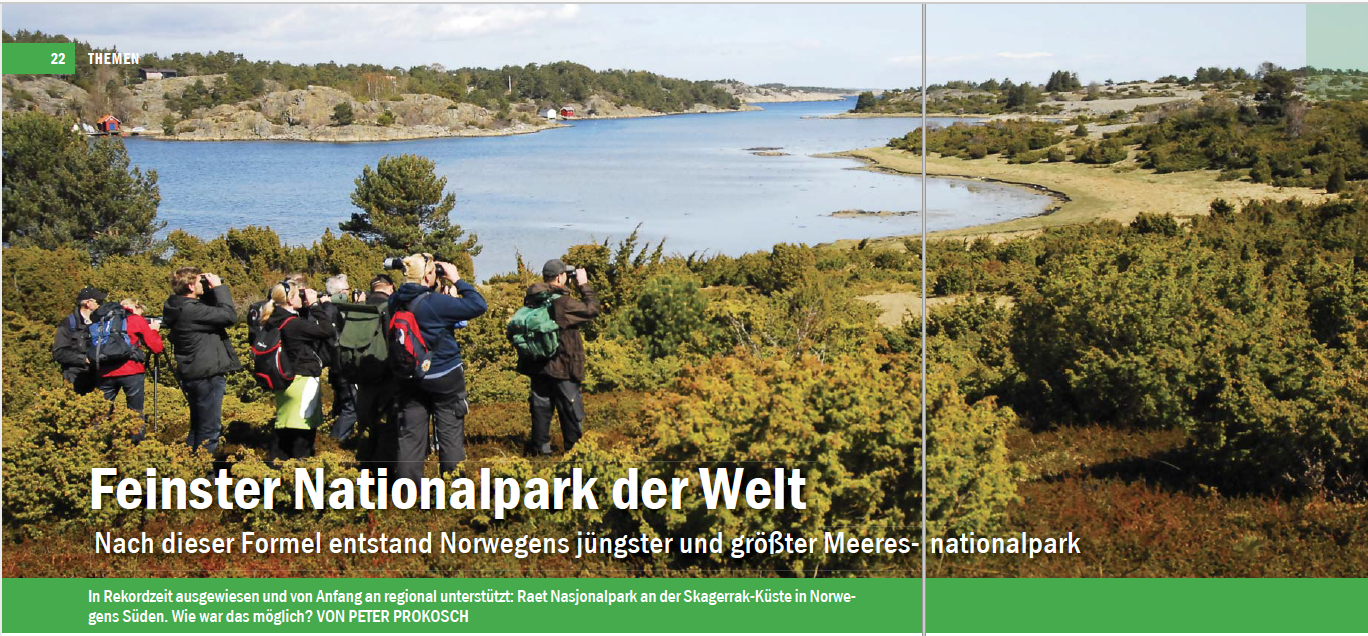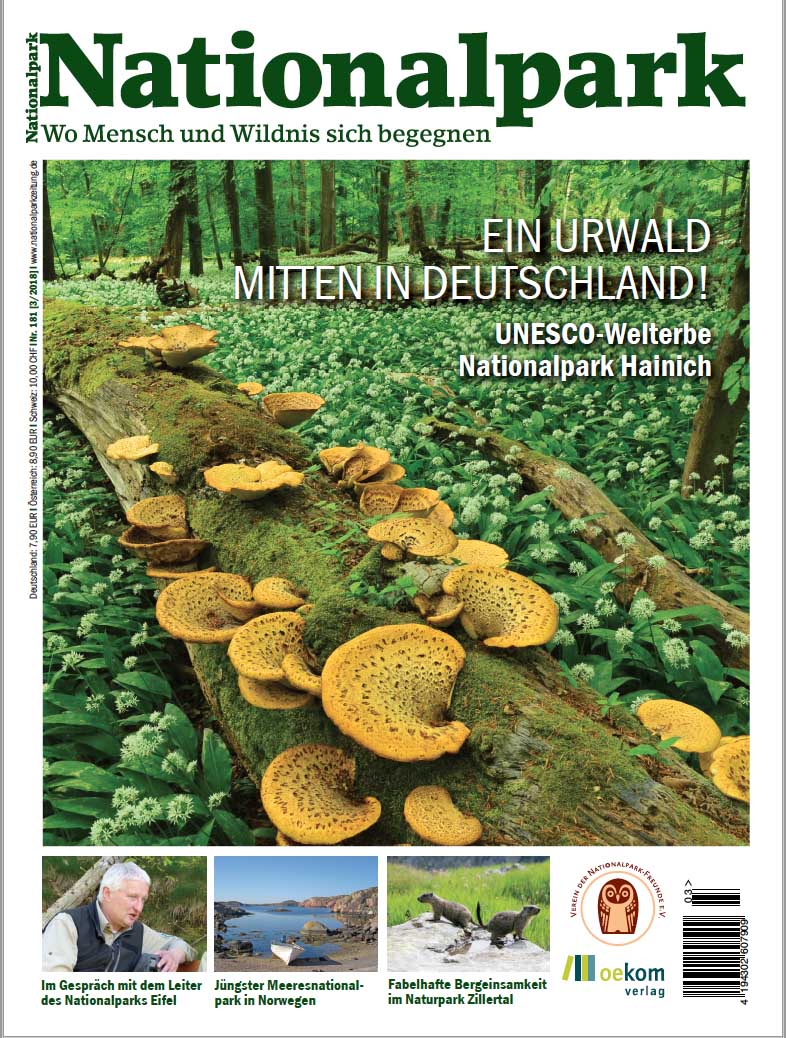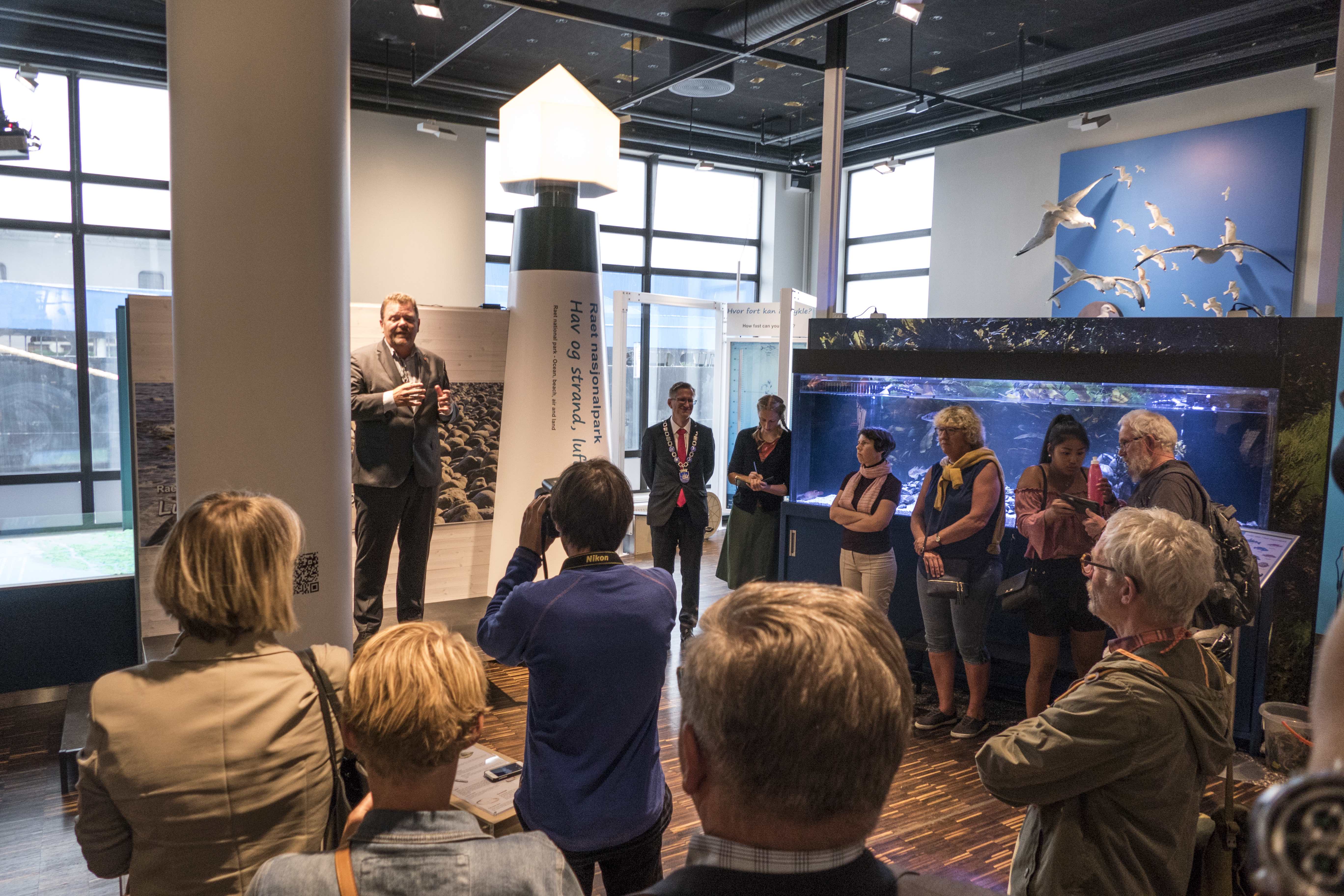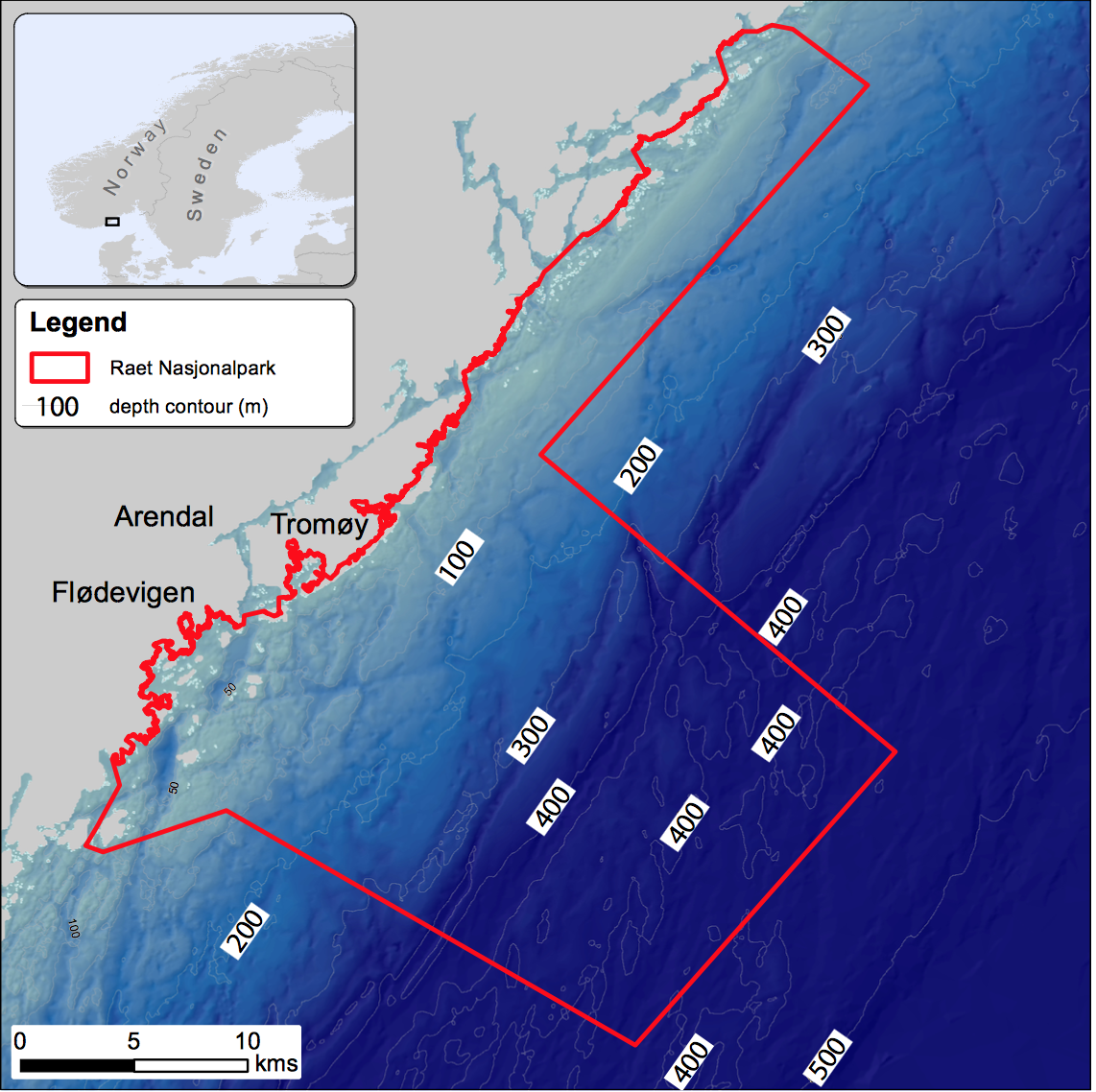 LT&C reported earlier about Raet national park, Norway’s so far largest marine protected area. After the shortest planning time of any Norwegian national park (only 4 years), the park on the Skagerrak coast of Southern Norway was established in December 2016. Another record was achieved with the several thousand participants at its inauguration in summer 2017. This summer, the main initiator of the park, former Aust Agder governor Øystein Djupedal, opened Raet’s first information center, which is situated in the basement of the building (Kunnskapshavn) in Arendal, where also LT&C has its office. Our involvement in the further discussions about the development of Raet national park, therefore, is a given. For the German readers, we can in this context point to an article in the recent edition of the magazine „Nationalpark“. Download it here: Themen
LT&C reported earlier about Raet national park, Norway’s so far largest marine protected area. After the shortest planning time of any Norwegian national park (only 4 years), the park on the Skagerrak coast of Southern Norway was established in December 2016. Another record was achieved with the several thousand participants at its inauguration in summer 2017. This summer, the main initiator of the park, former Aust Agder governor Øystein Djupedal, opened Raet’s first information center, which is situated in the basement of the building (Kunnskapshavn) in Arendal, where also LT&C has its office. Our involvement in the further discussions about the development of Raet national park, therefore, is a given. For the German readers, we can in this context point to an article in the recent edition of the magazine „Nationalpark“. Download it here: Themen

Raet National Park was developed from the very beginning with broad support from the local municipalities. An explanation for this could be, that the park was originally promoted as to become „the world’s finest“ and that „conservation by use“ should be achieved. Major expectations were raised that the park would attract more tourist. If German readers of the magazine „Nationalpark“ will be attracted to come to Southern Norway, they may come with expectations what normally defines a national park. These tourists then may trigger a discussion about what kind of use the park allows and where.
Meanwhile, in the promotion of the park, the word „use“ has been replaced by „sustainable use“. However, that also needs to be defined and a zoning concept of different kind of uses to be discussed. Ideally, the future tourists will support a development of Raet to meet internally defined national park standard.
Raet National Park, which was already formally established December 16, 2016, got its name („Raet“) from its key features, the moraines of the last ice age, visible as shores with round stones. The area at the Norwegian South coast is a major summer-holiday site, and there has been expressed much interest in the park from a local tourism perspective. When the next step will be taken by developing a management plan, it will be important to define what kind of use and where in order to safeguard the beautiful coastal landscape and its rich biodiversity for future generations. The expressed vision of the planning authorities is that those using the park will do so with the intention to inspire and educate for nature care. LT&C, having had engaged itself locally for establishing a convincing national park example, will in the future look out for partners involved in tourism to implement this vision.

Much of the area was so far already under landscape protection with islands and skerries functioning as sanctuaries protecting seabird colonies and cultural sites. However, the national park covers a larger sector of the sea, formerly planned as „Transekt Skagerrak“ marine protected area, and reaching out till about 500m deep sea. It should preserve a representative piece of the Skagerrak coast from any physical destruction or devaluation. Some smaller no-fishing zones are also included.
The national park covers also a smaller part of terrestrial area of islands and the mainland, which also includes parts of the North-Western-most distribution of beech forests. Altogether the park has been established to preserve unique geological and landscape structures, important biodiversity, including a rich birdlife, 1530 butterfly species (168 red-listed) and unique fungi and lichen-flora, including 20 red-listed mushroom species.

As being first of all a marine national park (95% of the area) it covers a diversity of valuable coastal and deeper marine habitats with kelp-forests of national importance, significant seagrass fields, and both rocky and muddy sea floors provide ideal living conditions for crustacea species with lobsters as flagship. The brackish delta of the salmon river Nidelv is also a special part of the park.
See also the report from GRID-Arendal on the State of the Environment in the Raet Marine Park: Raet_english_hi
And if you want to read the complete magazine „Nationalpark“, you can find it here: https://www.oekom.de/zeitschriften/nationalpark.html
[metaslider id=4553]


